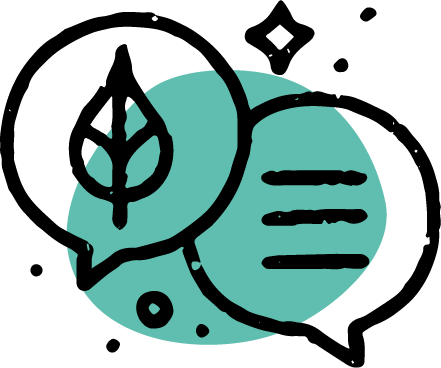5 Steps to Design a Great Brand For Your Academic Research Lab
A brand is more than just a logo! It’s the feeling people get when they think about your lab and work. Here are 5 steps to get started designing a powerful brand for your lab
Branding, in science?
Having a strong brand identity helps you attract the right collaborators, stand out from others in your field, and make the values driving your research program clear to your audience.
But branding? In science? It’s practically unheard of!
The scientific method is a rigorous approach to finding truth in the world around us. But make no mistake, science is a human endeavor, and branding is a critical step in modern science communication. Now, let’s get you up to speed with the basics of branding your lab.
“Brand is the sum total of how someone perceives [your lab]. Branding is about shaping that perception. ”
What is a brand? And why do you want one?
The terms "brand" and logo" are often used interchangeably. But branding is so much more than just the logo for your lab!
Your brand is how people think about your lab, how they feel about your work, and what they experience when they engage with your science. Branding includes the language you use, the visualizations you design, and the emotions you elicit in your communication.
Our goal here is to help you proactively DESIGN your lab’s brand, so that the world doesn’t define it for you!
Once your brand is designed, the next step is to integrate it into everything that you do - from emails to talks to publications and outreach. The more consistent the implementation, the stronger the brand identity.
Here we offer 3 steps to help you get started.
“Branding is what people say about you when you’re not in the room.”
Step#1: Find your niche
Before you start making any decisions about your brand, you need to complete some market research. Luckily, as a scientist, research is one of your superpowers, so this first step should feel very natural to you. Instead of looking for gaps in knowledge, however, you are looking for gaps in the market, i.e., who are the other fish in your pond?
Take notes on labs whose research overlaps with yours that are established and well-known. How do they present themselves and their work? You want to design a brand that is distinct from other labs, especially those most similar to you.
It’s important to have a handle on this before moving forward, as it will inform how your lab positions itself in the greater pond ecosystem.
For each of the labs you encounter, complete this sentence:
Unlike [THE ALTERNATIVE], we [KEY DIFFERENTIATOR].
#2: Define your Personality
Let’s get clear on the personality of your lab! Note: this is separate from YOUR personality, this is the collective personality of your lab group.
Is your lab’s vibe serious or playful? Are you driven by adventure or a thirst for knowledge? Are you classically academic or wildly unconventional? Designing a powerful brand comes from knowing who your lab is and what they care about.
Close your eyes for a moment and think of your lab as a person. What are they wearing? What do they eat for breakfast? Who would they like to hang out with?
Take great care to define what your lab values. As Simon Sinek explains, “People don’t buy what you do, they buy why you do it.”
When thinking about your lab, ask yourself a few questions:
What motivated me to start my lab?
Why does my lab exist?
How do we contribute to the world?
What is the story behind my lab that might resonate with others?
Your positioning statement can look something like...
We study [RESEARCH FOCUS] using [RESEARCH APPROACH] because we believe [BRAND VALUES]. We are unique from other labs because we [KEY DIFFERENTIATOR].
#step 3: Name your lab
As a new brand, one of your first big commitments is naming your lab. It’ll impact your logo, your domain, and the way people perceive your work. Often, academics fall back on using their last name. Personally, we feel that is a lost opportunity to showcase your creativity and values with a great lab name.
Ideally, you want a name that’s hard to confuse with other labs in your field. If you have a diverse research program, consider keeping your lab name broad and conceptual. Here are a few ideas pulled from the business world:
Choose an ambassador species, such as The Tardigrade Lab.
Use a suggestive word or metaphor, such as The Resilience Lab.
Describe it literally (caution: easy to imitate), such as The Eco-Evolution Lab
Create an acronym from a longer name, such as HBO (Home Box Office). In this case, you ONLY use the acronym, don’t use the full name.
Combine words, such as The Eco-Evo-Devo Lab.
Since your brand name will also affect the domain/URL of your website, be sure to shop around to see what’s available before deciding on a domain name.
It's also a good idea to run your name by a focus group of close people, if for no other reason than to make sure it doesn’t have an unintended meaning or is too similar to something else that you might’ve missed.
#4: Create Visual Assets
At this stage, you have defined your lab’s personality, story, and name. Now it’s time to create visual assets, like your logo, color palette, and font suite, to help you capture your vibe in visual form. Maybe your lab takes a collaborative approach to solving problems, or perhaps you focus on cutting-edge techniques that push boundaries. Whatever makes your lab unique, visual assets help communicate that to the world.
Plus, visual assets allow you to apply your branding consistently across print and digital media, including your website, publications, and talks. A coherent and consistent visual brand builds trust, excitement, and showcases how professional and progressive your lab is. Check out lab brand kits and what they include!
Conclusion:
branding 👏 helps 👏 you 👏 shine 👏
In a world where branding and visual identity are becoming increasingly important, science labs have a lot to gain by working with designers to create their own brand identity and visual assets. A great brand is a powerful tool that builds recognizability, boosts professionalism, impresses funders, and helps labs stand out in crowded academic ecosystems. Perhaps most importantly, brands empower labs to take control of their identity and share their unique personality with the world.
At Impact Media Lab, we believe that science is more than just data and experiments—it’s about stories, people, and ideas. By creating a brand and visual assets, your lab can take a crucial step in telling your story in a way that resonates with both the scientific community and the public at large. After all, in the quest for knowledge and innovation, every detail matters—including how you present yourself to the world.
About the author
Impact Media Lab is a small-but-mighty creative team that believes science can lead to seismic shifts in how we understand the world and our place in it. We always carry binoculars, sip tequila when offered, and endlessly aspire to be lost in the wild.






